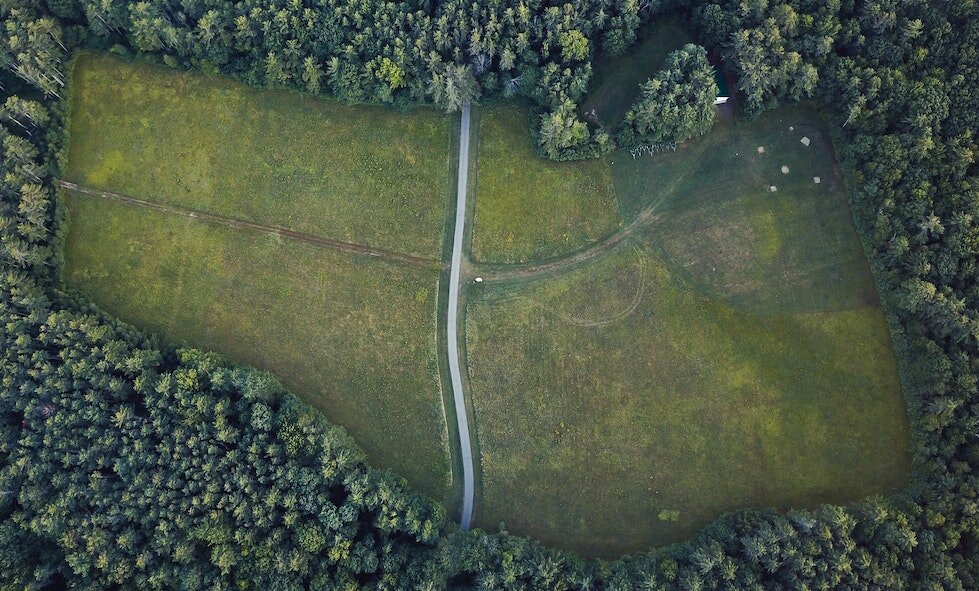Biodiversity, Agriculture & A New Economy #001
Highlights
Biodiversity is the variety of all living things on this Earth and how they fit together in the web of life
An ecosystem with low biodiversity is more sensitive to potential crises
There are no forms of monoculture in nature, we created it 13.000 years ago with our agricultural revolution
It is estimated that by 2050, 30% of all species on earth will be extinct
The main causes for the biodiversity crisis are deforestation, pollution, overpopulation and of course global warming
Biodiversity can sometimes be overlooked in discussions around the climate crisis. In these blog posts, we’ll cover exactly what biodiversity is, what is its current state across the globe, and how we can move to a new economy that preserves it rather than destroying it.
So, what is biodiversity and why does it matter?
When scientists explore each ecosystem, they find countless interactions between species, all honed by millions of years of evolution. If undamaged, this produces a finely balanced, healthy system which contributes to a healthy sustainable planet.
Put simply, biodiversity is the variety of all living things on Earth and how they fit together in the web of life, bringing oxygen, water, food and countless other benefits. Biodiversity can be said to represent the knowledge learned by evolving species over millions of years about how to survive through the vastly varying environmental conditions Earth has experienced.
For many of us living in towns and cities, wildlife is often something we only watch on television. But the reality is that the air we breathe, the water we drink and the food we eat all ultimately rely on biodiversity. Some examples are obvious: without plants, there would be no oxygen and without bees to pollinate there would be no fruit or nuts.
The sheer richness of biodiversity also has human benefits - beyond simply wanting your kids to enjoy it. Healthy ecosystems provide us with a vast range of services, all for free (i.e. food, decomposition of waste, oxygen, you name it). Arguably one of the most beneficial features of biodiversity is the resilience with which it protects an ecosystem. Healthy biodiverse ecosystems can better withstand and recover from a variety of disasters. On the flip side, an ecosystem with low biodiversity is more sensitive to potential crises.
Agriculture - how we ruined the places that grow our food, by growing food.
Life on Earth has evolved over millions of years, through trial and error, ultimately building ecosystems that are resilient, self-maintaining, and diverse.
Early hunter-gatherers relied on these thriving ecosystems for food, which provided them with more than enough nutritious food needed to survive. In return, humans contributed to this natural balance via hunting, defecating, moving organic matter around, and other standard behaviour.
Unfortunately, the modern human bears very little resemblance to our ancestors in relation to the natural world. Accordingly, modern agricultural systems bear very little resemblance to the processes intended by the natural world.
Rather than feeding off natural food forests, we almost exclusively rely on monocultures( large areas of land cultivated with a single crop) as a way to feed a growing population. Ironically, we even willingly cut down these diverse habitats in order to impose a mono-crop system that is highly susceptible to disease, climate change, new pests, and has very little variety in what they produce.
I mean, think about it - there are no monocultures in nature. This is not a naturalistic fallacy either, as nature itself fights against monocultures. That’s why all these additional inputs (such as fertilizer, pesticides, and genetic modification) are needed.
Growing food - the natural way vs the industrial way
It may come as no surprise that there are no monocultures in nature. Natural ecosystems are typically rich in biodiversity, containing a variety of fauna and flora that keep the conditions right for more life to occur.
Farming a single crop creates a number of problems that require farmers to use synthetic chemicals to correct. This throws the ecosystem out of balance and makes it susceptible to serious problems. For example, some of the insects living in monoculture farms may not have any predators at all, which allows their populations to grow out of control.
Monoculture farming fails to conserve water the way traditional, multi-crop farming does. Because most monocultural farms use lots of mechanized equipment, they require a lot of fossil fuels to operate. Monoculture doesn’t receive as much attention from mainstream media as some of the other environmental problems affecting the earth. But that doesn’t mean it isn’t something that should be ignored. If farming practices aren’t changed in the next decade or two, irreparable harm is likely to occur.
The best way you can help stop the problems associated with monoculture is to buy locally grown, organically farmed produce.
What is causing the biodiversity crisis?
A recent UN report on biodiversity estimates the global rate of species extinction is currently tens to hundreds of times higher than it has averaged over the past 10 million years. Some experts estimate that around 30% of all species on earth will be extinct by 2050. What is going on?
Well, one of the leading factors to the loss of biodiversity is the destruction of habitats, particularly tropical rainforests as these tend to contain a rich variety of species. In turn, habitats are destroyed for a multitude of reasons: deforestation, pollution, overpopulation, and of course, global warming.
Another important killer of biodiversity is invasive species. Human activities have been the major cause of encouraging invasive species. Invasive species refer to those that would normally remain constrained from an ecosystem because of the presence of natural barriers. Since these barriers are no longer existing, invasive species invade the ecosystem, destroying native species.
If the main contributors to biodiversity loss are human-made, then the solution has to involve understanding how these ecosystems were maintaining balance before our arrival and exploitation.
Fred Rosa - Brand Activist - LinkedIn


